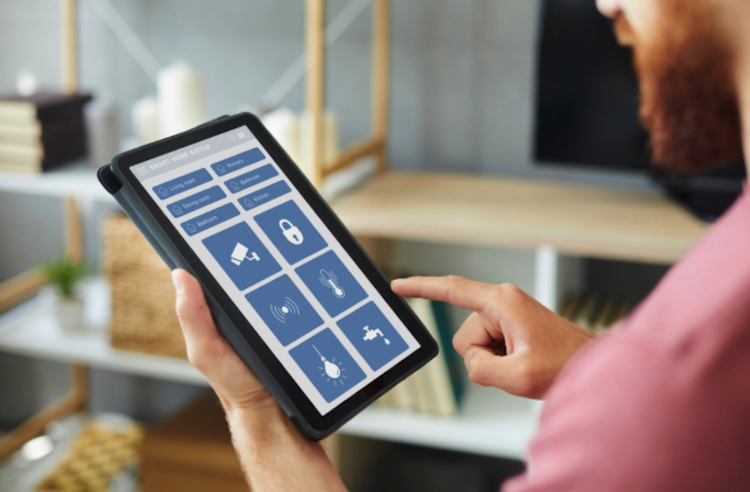
How to get started with home automation
In 2021, nearly 65 percent of American homes include some form of a smart home device, according to a ValuePenguin survey of 1,000 individuals. Though the realm of home automation is growing in popularity, it can be a baffling arena.
Just the term sounds like a case of humans versus machines in some epic cyber battle, but home automation is really about simplifying human life through automating electronics in the house, such as appliances, HVAC systems, and security features, allowing them to complete tasks without requiring much interaction with the homeowner.
When implemented correctly, home automation can not only make life more convenient but can actually reduce monthly utility bills. If you’re ready to harness this futuristic power and take the leap into automating your home, here are the key steps to take to research, purchase, and install what’s needed to make your home smarter.
Step 1: Research What’s Right for You
Home automation looks different for each individual or family that implements it. It doesn’t mean you’ll end up with a robotic maid named Rosie like in “The Jetsons” (unless you want one).
The key is to research what is available and compatible with your home and lifestyle, but home automation generally includes lighting, stereo systems, windows/blinds, heating and ventilation, refrigeration, plus door and window locks and security.
Automation options are nearly endless, though. For convenience, you can alternate the opening and closing of your blinds, program your AC to lower half an hour before you get home, or set your stereo to kick on the minute you return home.
For security, you could choose to automate your lighting to come on and go off while you are away and have an alarm system linked to your smartphone to alert you in the event that someone tries to enter your home. It all depends on what you want out of automation in your home.
Step 2: Purchase a Starter Kit
When deciding what to begin with, homeowners will want to select an expandable system that allows for the addition of more devices later. There are tons of starter kits available, but compatibility should be a big consideration. Some brands won’t sync with others.
A basic kit will offer a few components for automated lighting and security, including a control hub, Hi-Def cameras, LED smart bulbs, and wireless door and/or window sensors. Be sure to choose a starter kit that will allow for other devices, like HVAC and appliances, to connect to it later on.
Step 3: Install Your System
To install, you’ll need to decide whether you want to go wireless or not. Hubs generally can connect via hardwire ethernet cable or wirelessly via router and software with a password. The latter is usually controlled with an app on your smartphone while hardwire installations require downloading a program to your PC.
The exciting part of installing your automation system is deciding how to control it. You can opt to set your features to activate on a timer or control the activation remotely with your smartphone — and with the smartphone, you even have options that would make George Jetson jealous, like manual button control or voice activation.
Go Auto
Now that you understand what to consider when it comes to home automation installation and how to get started, it’s time to conquer that cyber arena. Seize the future by researching options convenient for you, investing in products and services right for your lifestyle, and installing a system that allows you control of your home now and into the future.
